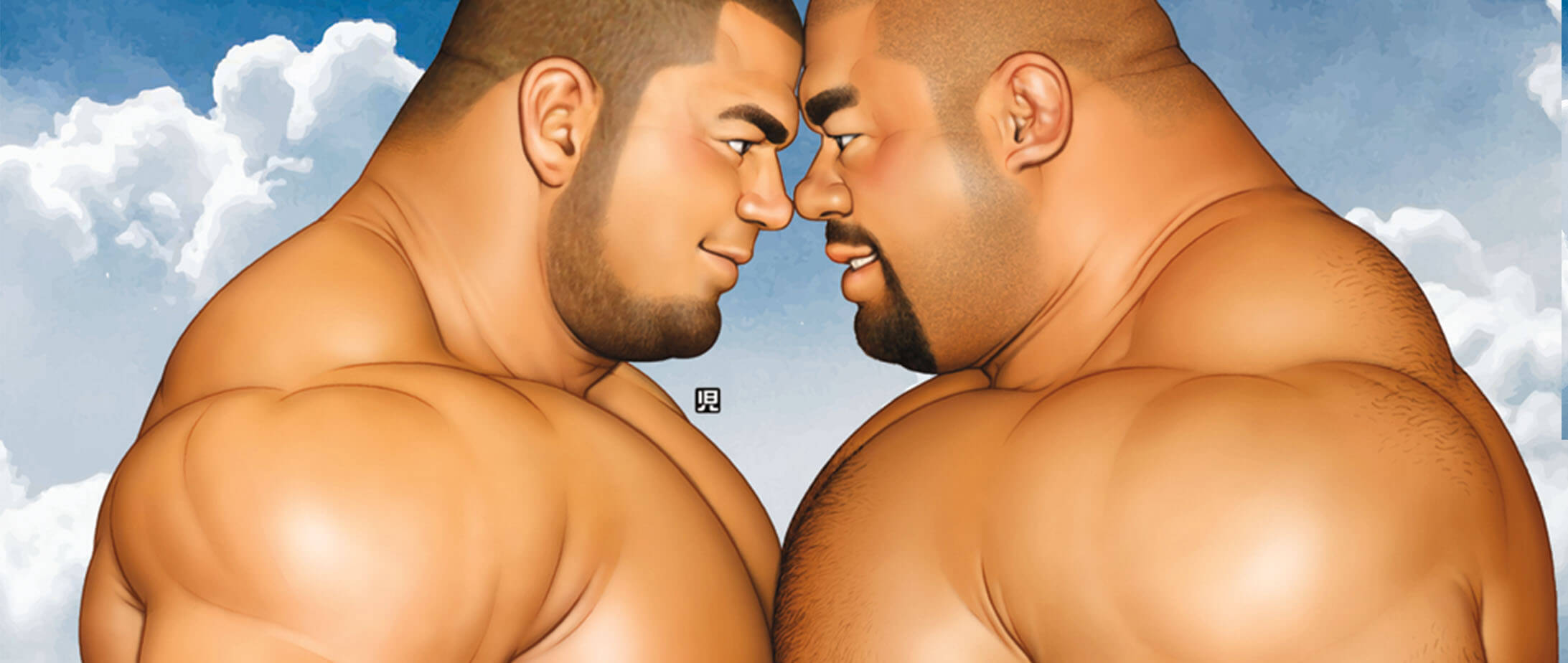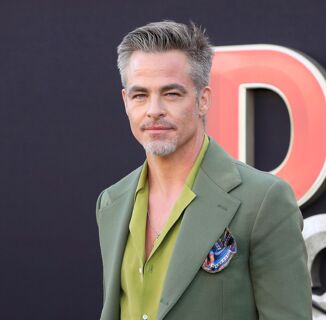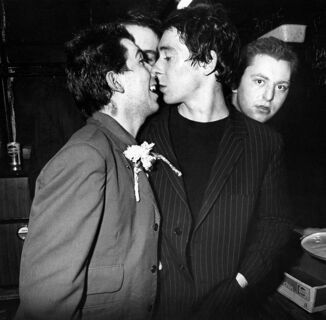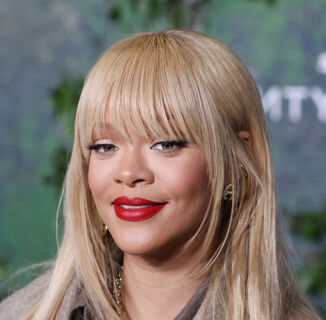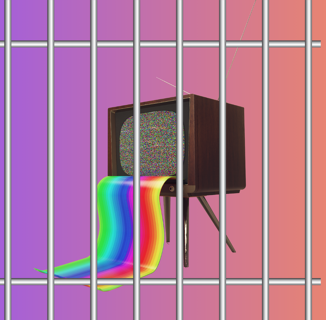Jiraiya (not his real name), worked in obscurity through his 20s as a commercial designer before turning his passion for drawing unmistakable, gorgeous beefy dudes into a veritable cottage industry. You know his work when you see it, and it’s gone from being on comic books to everything from sweatshirts to sex toys. We got him to open to us about growing up gay in rural Japan, cultural bias, and why skinny guys just aren’t his thing. Nope. Forget about it.

Kaz: Tell us about yourself.
Jiraiya: I’m an Illustrator and Manga artist specializing in drawing muscular men for a gay audience. I have been publishing my art through gay media and magazines for the past 20 years. I have a background in commercial advertising design.

What was it like growing up in Japan?
I was born and raised in Hokkaido, the northernmost island of Japan. I still live only a few hundred feet from where I was born. I come from a very typical family in a somewhat quiet part of Japan. I realized around 3rd grade that I was more interested in boys rather than girls but didn’t know what that meant, and I also had girlfriends throughout my school days. My first sexual experience was with a woman when I was 18.
Around age 24, I knew that my relationship with my girlfriend was not being true to myself. Back then, there were no gay dating websites or mobile phones to find out more about being gay. But gay magazines were available, so I picked up one at a local book store in Sapporo. I was so nervous about buying a gay magazine in public and felt embarrassed in front of the cashier. I found the personal ad section in the magazine, sent my info, and waited a month for a reply. My ad was not exactly an exciting one, and I only received a few replies. At some point the publisher mixed up my ad with someone else’s, and I started to receive hundreds of replies, all asking me to become their master for a BDSM scene. I eventually met someone through an ad and had my first gay sex experience when I was 25. The person who I met was very much a regular guy, and our sex was not necessary exotic, but vanilla.
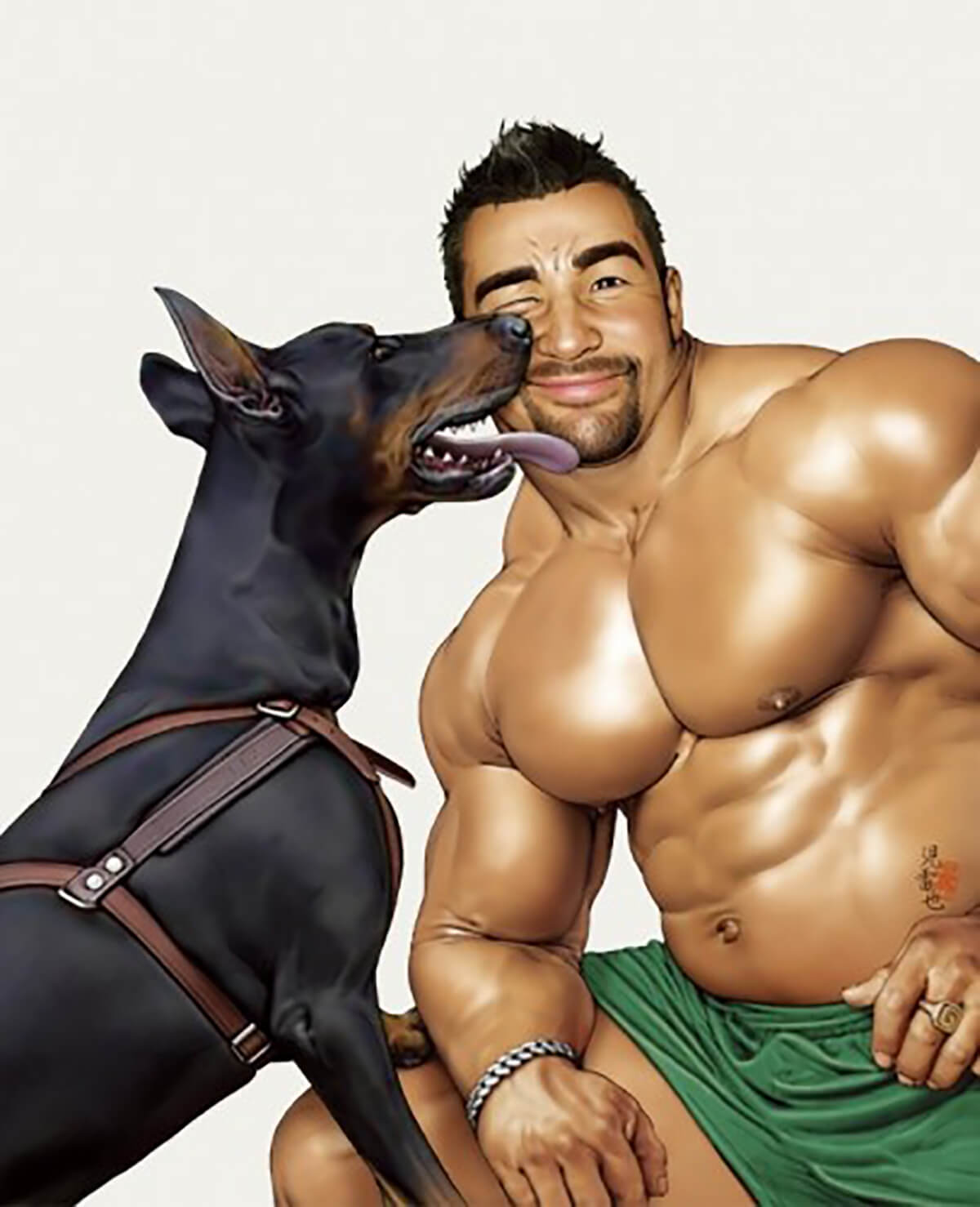
Tell us about the development of your art.
Looking back, I could see that I was attracted to men, especially muscular men in the Judo club at my high school. I was very introverted and interested in drawing and art. I would sit quietly, drawing on the back of newspaper ads or on any other paper that was available. I joined the art club at school and spent every day in the classroom drawing and painting. I was skinny and pale and was often bullied at school, including my teachers telling me to eat more and get bigger and stronger. The boys in the Judo club were quite the opposite, very physical and outgoing. They became my muse as I started to develop my art style. I enjoy developing characters in my art that match with my fantasies and sexual preference. Sometimes I get requests to draw young, skinny, and innocent looking boys, and I really can’t.

How does being Japanese get reflected in your art?
In some sense, my art is very Japanese. Japanese don’t necessarily invent new things but often improve them. The Japanese religion Shinto is interesting in this respect. Shinto often wraps its core scriptures in mysterious layers to keep it a secret, but inside it’s hollow. We pay more attention to how things are presented and how to make them better but not necessarily invent something completely new. My art is often that way. I pay more attention to different body parts that I like and try to combine them in one character. I don’t necessary stick with one subject or style but try to incorporate what’s new or what’s in. I like many other artists, especially Manga creators. Katsuhiro Otomo (author of AKIRA) had a huge impact as I was becoming interested in drawing. His Manga was no longer a comic for the masses, but he elevated the status of Manga into graphic art. Otomo made Manga equal to cinema and film art or even more.

What is it like being a gay artist in Japan?
I have a day job as a graphic designer, and I have not come out. Japan has progressed in gay civil rights and there are some protections, but that’s different from what an actual workplace is like. Not trying to generalize, but Japanese society is like a hamlet with villagers who don’t like people who look and behave differently. Gay is a foreign substance. It’s acceptable as long as gay is obvious in mass media, like a drag queen doing a talk show, but not in a regular office job. You won’t lose your job by coming out, but the working environment will be different. Discrimination must be removed, but it’s hard to remove prejudice and bias from inside, especially on the subject of sex and marriage. We all have a preference for who or what we like. Processing that preference in sex without creating bias is really hard. Gay art is hard to separate from gay porn, and porn has even more challenges in society and is often the subject of censorship. I draw characters that get people excited, so you could say my drawing is not art but porn. That’s not important for me as long as my viewers find some connection to the characters I project.

Do you use mobile apps or translate your art for that market?
I’m from an older generation, not the smartphone generation. Some mobile social networking systems have my art as a stamp, but that’s about it. No Instagram. No Twitter. I’m more analog. I have a blog but no mobile app presence. I started going to gay bars before there were cell phones. My first encounter with gay culture was through a gay magazine. Discovering a gay magazine was so shocking because I realized that I was not alone, and there are many others like me. It made me feel so much more comfortable about myself. I think this generation has the same feeling when they start using a mobile app, see a screen full of others, and meet someone they like.

IG: @kazviju
Help make sure LGBTQ+ stories are being told...
We can't rely on mainstream media to tell our stories. That's why we don't lock our articles behind a paywall. Will you support our mission with a contribution today?
Cancel anytime · Proudly LGBTQ+ owned and operated
Read More in Culture
The Latest on INTO
Subscribe to get a twice-weekly dose of queer news, updates, and insights from the INTO team.
in Your Inbox

